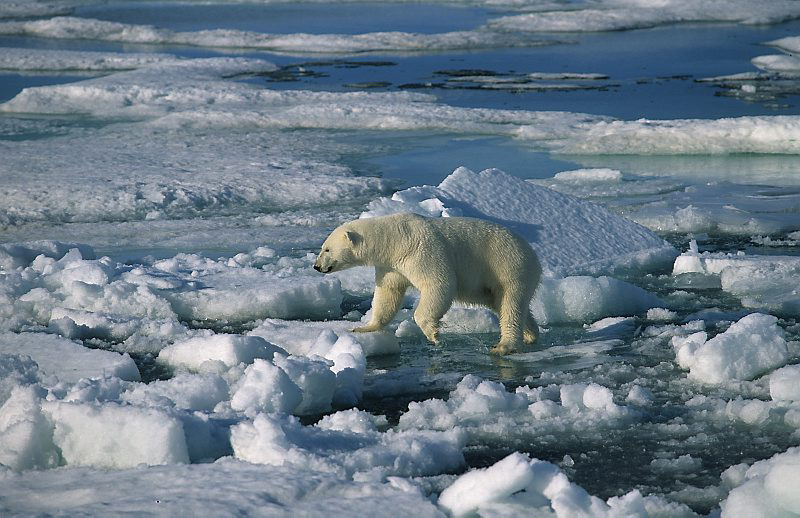All of these species have a close association with sea ice throughout most of their lives. Polar bears and ivory gulls breed mainly on land, but are dependent on ice-covered waters to find food. In addition to finding food along the ice edge, ringed seals also use the ice for breeding and moulting.
A warmer Arctic
In a warmer Arctic species that depend on ice will experience major changes. The expected dramatic reduction of sea ice and increased water and air temperature will cause the disappearance of areas where animals such as polar bears and some seal species find food. In addition, important resting and transport "corridors" for other species (e.g. seabirds moving across long distances) will be lost or greatly reduced.
Challenges for polar bears
The polar bear is the top predator in the Arctic. It is highly dependent on sea ice as a platform for hunting because this is where it has access to its main prey, primarily ringed seals. The expected reduction of sea ice will lead to major changes in the availability of food for polar bears, both because the distribution of prey will change and that many of today's fat-rich prey may disappear. Polar bears will also have to expect increased competition from species that come from more temperate areas, as well as an increase in the incidence of diseases, parasites and pollution. It is also expected that many Arctic animal and bird species will be exposed to increased human activity in these previously frozen areas.
Life in the ice
In the last millennia multi-year ice has been a typical feature of the Arctic, which may change with a warmer climate. Multi-year ice acts as a reservoir for microbes, algae, invertebrates and fish larvae that spread in the newly formed annual ice, and the productive edge of the ice has mostly occurred over relatively shallow shelf areas.
When the ice retreats so far north that it is no longer located over the continental shelf during the summer and when the multi-year ice disappears, we may see major changes in Arctic marine ecosystems. However, many changes will certainly occur long before these take place. The ice edge zone has always been an important area for many of the top Arctic predators, as food is plentiful. In recent years, the ice edge has been much farther north than was usual before, and it is likely that changes are already taking place in the composition of the prey communities in this area.
Research projects
The distance from shore to the ice edge is a variable of great ecological relevance. Several species move between land and coast and hunting areas in the pack ice. Both polar bears and ringed seals are examples of species that follow the pack ice north through the summer, only to return to coastal areas toward the autumn. Seabirds have the same challenge, albeit on a shorter time scale. Several of the research projects in ICE Ecosystems study how seabirds and marine mammals will respond to altered ice distribution, particularly the southern ice edge.
About ICE
The Norwegian Polar Institute's Centre for Ice, Climate and Ecosystems, ICE, is a national centre for ice and climate research in the polar regions.
The academic focus of the centre is:
- sea ice and snow, especially how the sea ice and snow affect and are affected by climate
- climate change effects on the ecosystem of the north, especially on ice-dependent species
- glaciers in the polar regions, including the exchange of knowledge about high-altitude glaciers outside the polar regions
Energy and matter exchange between ocean, ice and atmosphere is given great attention. The same applies to sea ice thickness and distribution in the Arctic. Ocean circulation in the Arctic and its link to the energy flow and ice distribution is also an important topic for ICE.
